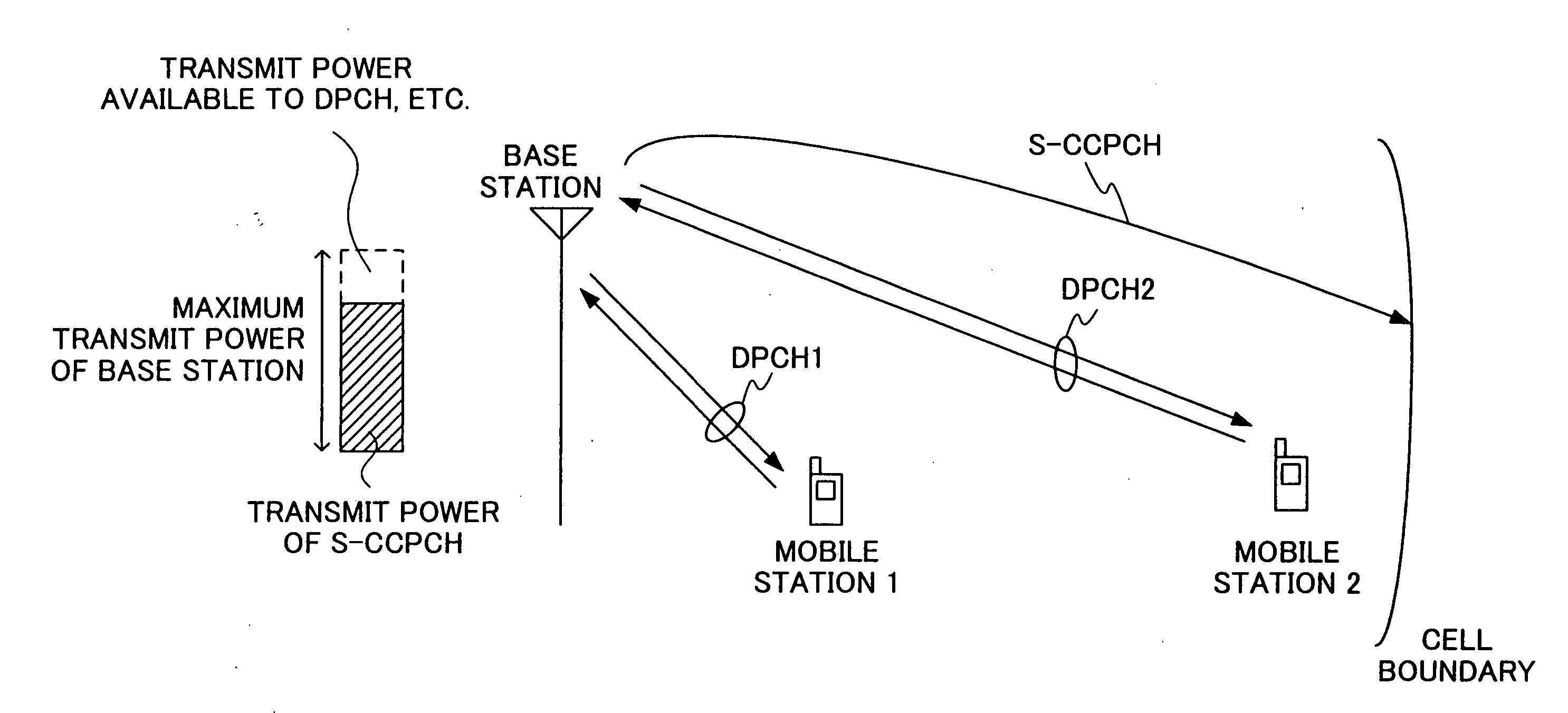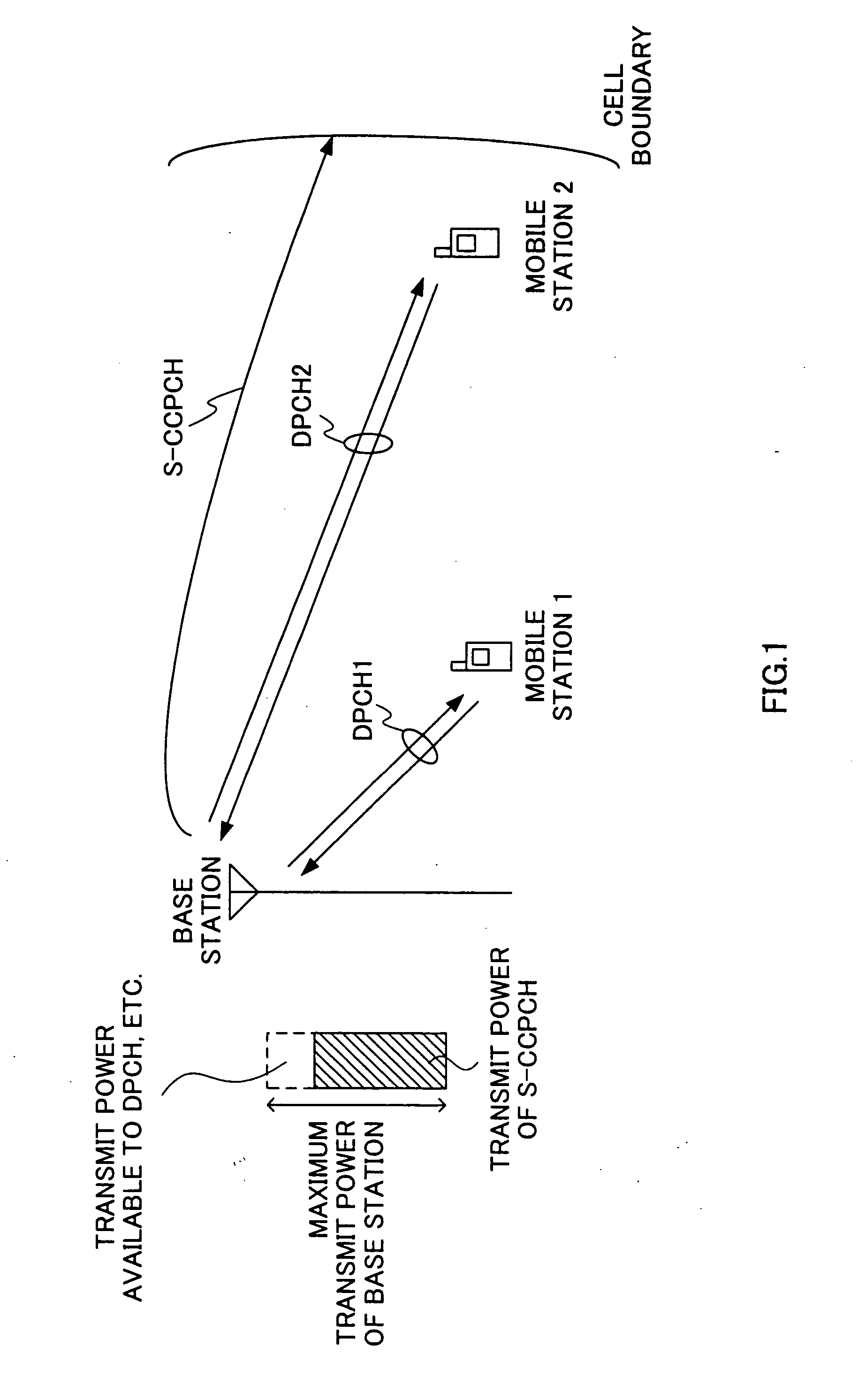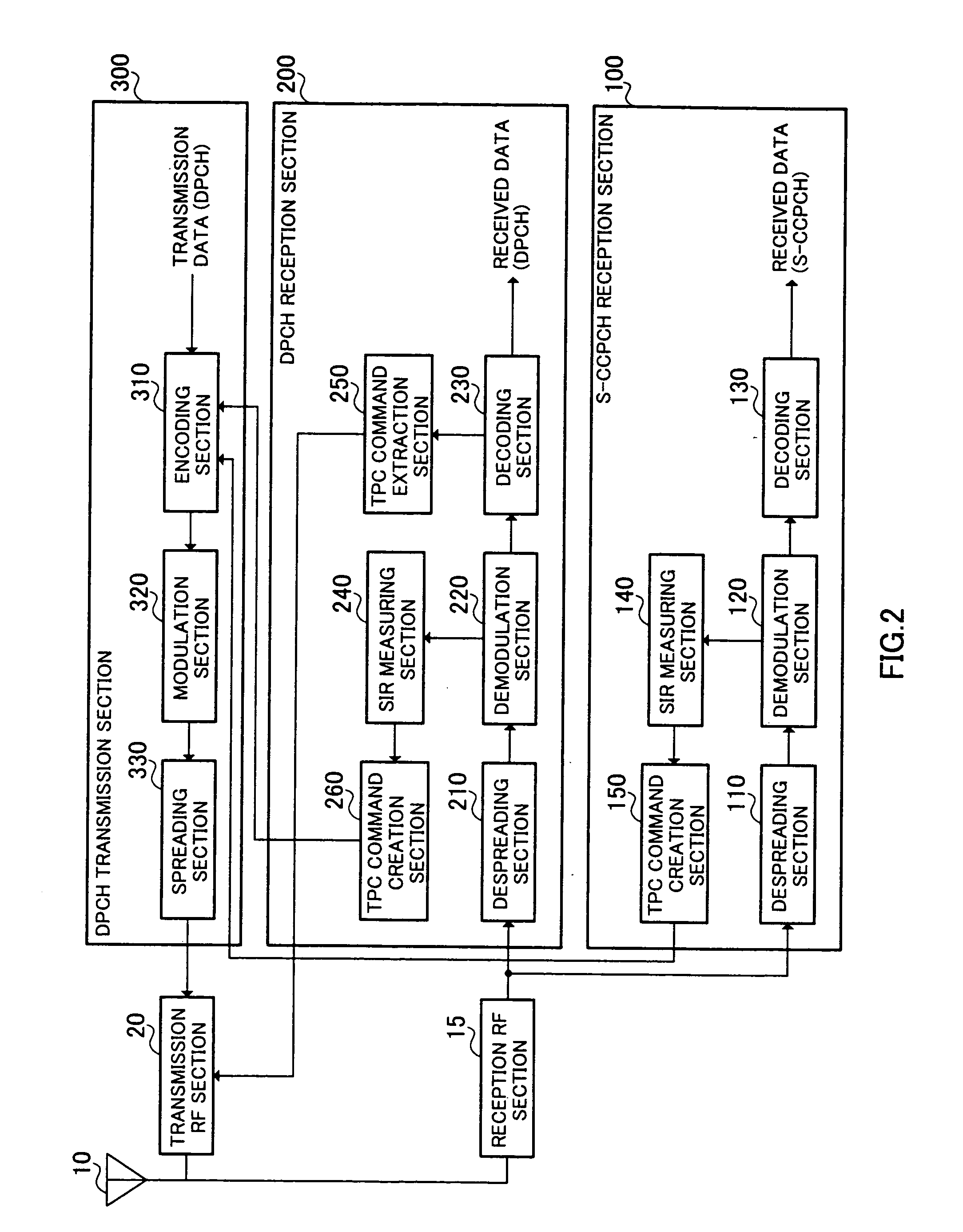Transmission power control method and base station device
a transmission power and base station technology, applied in power management, high-level techniques, wireless communication, etc., can solve the problems of reducing the subscriber capacity (system capacity) of the entire system, deteriorating communication quality of speech communication, and reducing the transmit power available for other channels such as dpch., so as to prevent excessive transmit power
- Summary
- Abstract
- Description
- Claims
- Application Information
AI Technical Summary
Benefits of technology
Problems solved by technology
Method used
Image
Examples
embodiment 1
[0028]FIG. 2 is a block diagram showing a configuration of a mobile station according to Embodiment 1 of the present invention. This mobile station is used in a mobile communication system in which an MBMS is carried out.
[0029] The mobile station shown in FIG. 2 includes an antenna 10, areception RF section 15, an S-CCPCH reception section 100, a DPCH reception section 200, a DPCH transmission section 300 and a transmission RF section 20. The S-CCPCH reception section 100 includes a despreading section 110, a demodulation section 120, a decoding section 130, an SIR measuring section 140 and a TPC command creation section 150. The DPCH reception section 200 includes a despreading section 210, a demodulation section 220, a decoding section 230, an SIR measuring section 240, a TPC command extraction section 250 and a TPC command creation section 260. The DPCH transmission section 300 includes an encoding section 310, a modulation section 320 and a spreading section 330.
[0030] The rec...
embodiment 2
[0053] This embodiment controls transmit power of a downlink S-CCPCH to power equal to transmit power of a downlink DPCH under transmit power control according to a TPC command or power with an addition of an offset.
[0054]FIG. 8 is a block diagram showing a configuration of a mobile station according to Embodiment 2 of the present invention. The same components as those of Embodiment 1 (FIG. 2) are assigned the same reference numerals and explanations thereof will be omitted. The mobile station shown in FIG. 8 adopts a configuration with the SIR measuring section 140 and TPC command creation section 150 omitted from the S-CCPCH reception section 100 of the mobile station shown in FIG. 2. That is, in the mobile station shown in FIG. 8, no TPC command for the downlink S-CCPCH is created and only TPC commands for the downlink DPCH are input from a TPC command creation section 260 of a DPCH reception section 200 to an encoding section 310. Therefore, TPC commands for the downlink DPCH ...
embodiment 3
[0064] This embodiment controls the amount of the offset according to Embodiment 2.
[0065]FIG. 11 is a block diagram showing a configuration of a mobile station according to Embodiment 3 of the present invention. The same components as those in Embodiment 2 (FIG. 8) are assigned the same reference numerals and explanations thereof will be omitted. The mobile station shown in FIG. 11 adopts a configuration with a response signal creation section 160 added to the S-CCPCH reception section 100 of the mobile station shown in FIG. 8.
[0066] A decoding section 130 of the S-CCPCH reception section 100 inputs a CRC result of the S-CCPCH, that is, CRC=OK (no error) or CRC=NG (error found) to the response signal creation section 160. When CRC=OK is input, the response signal creation section 160 creates an ACK (Acknowledgement: positive response) signal and inputs the ACK signal to an encoding section 310. On the other hand, when CRC=NG is input, the response signal creation section 160 creat...
PUM
 Login to View More
Login to View More Abstract
Description
Claims
Application Information
 Login to View More
Login to View More - R&D
- Intellectual Property
- Life Sciences
- Materials
- Tech Scout
- Unparalleled Data Quality
- Higher Quality Content
- 60% Fewer Hallucinations
Browse by: Latest US Patents, China's latest patents, Technical Efficacy Thesaurus, Application Domain, Technology Topic, Popular Technical Reports.
© 2025 PatSnap. All rights reserved.Legal|Privacy policy|Modern Slavery Act Transparency Statement|Sitemap|About US| Contact US: help@patsnap.com



